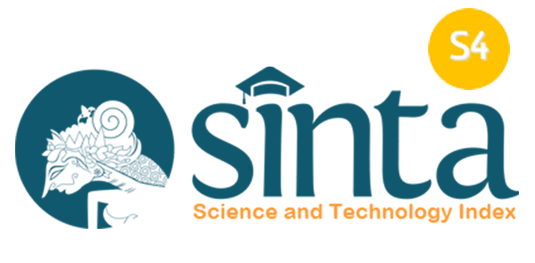Internet of Things as Engine of Economic Growth in Indonesia
Abstract
The economic diversification concept gives hope for a country with rich natural resources to strengthen its economic basis. Thus industrial revolution era of 4.0 provides great opportunity to fasten the process. A study by McKensey in 2011 proved that the internet in the developing country contributes around 3.4% towards its GDP which means that the internet has become a new hope for the economy in the future. Indonesia is one of the countries that is attempting to maximize the role of the Internet of Things (IoT) for its economic growth. The attempt has made the retail and tourism industries as the two main sectors to experience the significant effect of IoT. In the process of optimizing the IoT to support the economic growth, Indonesia faces several issues especially in the term of the internet network quality and its distribution, the inclusive access of financial access and the infrastructureReferences
Aco, H. (2018). Pengemudi Ojek Online di Jakarta Capai 1 Juta, Tapi Pemerintah Belum Akui Keberadaan Mereka. Retrieved from http://www.tribunnews.com/metropolitan/2018/03/27/pengemudi-ojek-online-di-jakarta-capai-1-juta-tapi-pemerintah-belum-akui-keberadaan-mereka%0A%0AEditor: Hasanudin Aco
APJII. (2016). Saatnya jadi Pokok Perhatian Pemerintah dan Industri. Buletin APJII, 5(May), 1–7. Retrieved from https://apjii.or.id/downfile/file/BULETINAPJIIEDISI05November2016.pdf
Ayuk, E. T., & Klege, R. A. (2017). Extractive Resources , Global Volatility And Africa’s Growth Prospects. African Journals Online, 8(1), 259–287. https://doi.org/https://dx.doi.org/10.4314/jsdlp.v8i1.11
Badan Pusat Statistik. (2015). Produk Domestik Bruto (Lapangan Usaha). Retrieved from https://www.bps.go.id/statictable/2009/07/02/1207/-seri-2000-distribusi-pdb-triwulanan-atas-dasar-harga-berlaku-menurut-lapangan-usaha-persen-2000-2014.html
Badan Pusat Statistik. (2018). Penduduk 15 Tahun Ke Atas yang Bekerja menurut Lapangan Pekerjaan Utama 1986 - 2018. Retrieved from https://www.bps.go.id/statictable/2009/04/16/970/penduduk-15-tahun-ke-atas-yang-bekerja-menurut-lapangan-pekerjaan-utama-1986---2018.html
China Daily. (2017). China’s digital economy surges 18.9%, drives growth. Chinadaily.Com.Cn. Retrieved from http://www.chinadaily.com.cn/business/2017-07/20/content_30179729.htm
Cuming, V., Mills, L., Strahan, D., Boyle, R., Stopforth, K., Latimer, S., & Becker, L. (2015). Global Trends in Renewable Energy Investment 2015. Frankfurt School of Finance & Mangement. https://doi.org/10.1016/j.rser.2011.07.102
Dečman, M., Stare, J., & Klun, M. (2010). E-government and cost-effectiveness: E-taxation in slovenia. Transylvanian Review of Administrative Sciences.
Dhani, A. (2016). Gila Belanja di Dunia Maya. Retrieved from https://tirto.id/gila-belanja-di-dunia-maya-b9tj
EY FinTech Global Network. (2017). EY FinTech Adoption Index 2017. The rapid emergence of FinTech.
Gustova, D. (2017). The impact of e-government strategy on economic growth and social development, (October).
Hasan, I., Wachtel, P., & Zhou, M. (2009). Institutional development, financial deepening and economic growth: Evidence from China. Journal of Banking and Finance. https://doi.org/10.1016/j.jbankfin.2007.11.016
Huang, C. D., Goo, J., Nam, K., & Yoo, C. W. (2017). Smart tourism technologies in travel planning: The role of exploration and exploitation. Information and Management. https://doi.org/10.1016/j.im.2016.11.010
Internetworldstats.com. (n.d.). World Internet Usage and Population Statistics. Retrieved from https://www.internetworldstats.com/stats.htm
Iskandar. (2017). 200 Juta Pengguna Instagram Aktif Kunjungi Akun Jual Beli. Retrieved from 200 Juta Pengguna Instagram Aktif Kunjungi Akun Jual Beli
Julianto, P. A. (2017). E-commerce Dinilai Bukan Penyebab Lesunya Ritel Konvensional Artikel ini telah tayang di Kompas.com dengan judul “E-commerce Dinilai Bukan Penyebab Lesunya Ritel Konvensional”, https://ekonomi.kompas.com/read/2017/10/16/203658726/e-commerce-dinilai-bukan-. Retrieved from https://ekonomi.kompas.com/read/2017/10/16/203658726/e-commerce-dinilai-bukan-penyebab-lesunya-ritel-konvensional
katadata. (n.d.). Pengguna Internet Indonesia Masih Terkonsentrasi di Jawa. Retrieved from https://databoks.katadata.co.id/datapublish/2018/02/22/pengguna-internet-indonesia-masih-terkonsentrasi-di-jawa
Katadata. (2018). Berapa Pembeli Digital Indonesia? Retrieved September 26, 2018, from https://databoks.katadata.co.id/datapublish/2018/03/27/berapa-pembeli-digital-indonesia
Kementerian Pariwisata. (2017). Laporan Kinerja Kementerian Pariwisata 2017. Retrieved from http://www.kemenpar.go.id/userfiles/LAKIP 2017 250518.pdf
Lio, M.-C., Liu, M.-C., & Ou, Y.-P. (2011). Can the internet reduce corruption? A cross-country study based on dynamic panel data models. Government Information Quarterly. https://doi.org/10.1016/j.giq.2010.01.005
Manyika, J., & Roxburgh, C. (2011). The great transformer: The impact of the Internet on economic growth and prosperity. McKinsey Global Institute, 1–10. Retrieved from http://www.iei.liu.se/facksprak/engelska/civilingenjorsutbildning/then18/kursmaterialarkiv/lesson-twelve/1.333650/The_great_transformer_Impact_of_Internet_on_economic_growth.pdf
Maulana, R. F. (2018). Survei APJII: Penetrasi Internet di Indonesia Capai Angka 54 Persen di Tahun 2017. Retrieved from https://id.techinasia.com/penetrasi-internet-di-indonesia-2017
Michelacci, C., & Lopez-Salido, D. (2007). Technology shocks and job flows. Review of Economic Studies. https://doi.org/10.1111/j.1467-937X.2007.00452.x
Miorandi, D., Sicari, S., De Pellegrini, F., & Chlamtac, I. (2012). Internet of things: Vision, applications and research challenges. Ad Hoc Networks. https://doi.org/10.1016/j.adhoc.2012.02.016
Ossowski, R., & Halland, H. (2016). Fiscal Management in Resource-Rich Countries. Washington, DC: World Bank. https://doi.org/10.1596/978-1-4648-0495-3
Otoritas Jasa Keuangan. (2016). Survei Nasional Literasi dan Inklusi Keuangan 2016. Survey Report. Retrieved from https://www.ojk.go.id/id/berita-dan-kegiatan/siaran-pers/Documents/Pages/Siaran-Pers-OJK-Indeks-Literasi-dan-Inklusi-Keuangan-Meningkat/17.01.23 Tayangan Presscon nett.compressed.pdf
Oxfam. (2007). Lifting the resource curse. Oxfam Briefing Paper. Retrieved from 1098-6596
Putra, D. A. (n.d.). Kemenkop: Baru 20 persen UMKM yang mengakses modal lewat bank. Retrieved from https://www.merdeka.com/uang/kemenkop-baru-20-persen-umkm-yang-mengakses-modal-lewat-bank.html
Speedtest.net. (n.d.). Speedtest Global Index. Retrieved from http://www.speedtest.net/global-index
Statistics SA. (2014). Employment, unemployment, skills and economic growth. Statistics South Africa.
Suhaimi, M., Yusof, M., Romle, A. R., Udin, M. M., Khirul, M., Mohd, A., … Azmi, A. (2016). The Origin of Oil Plunge in Political Economy and Aftermath on the Oil Price. International Journal of Economics and Financial Issues, 6, 125–129.
The Government Office for Science. (2014). The IOT: making the most of the Second Digital Revolution. The Government Office for Science. https://doi.org/GS/14/1230
World Bank. (2018). International tourism, number of arrivals. Retrieved from https://data.worldbank.org/indicator/ST.INT.ARVL
World Economic Forum. (2016). The Future of Jobs Employment, Skills and Workforce Strategy for the Fourth Industrial Revolution. Growth Strategies. https://doi.org/10.1177/1946756712473437
WTTC. (2017). Tourism Economic Impact 2017: World. World Travel & Tourism Council.
Xiang, Z., Magnini, V. P., & Fesenmaier, D. R. (2015). Information technology and consumer behavior in travel and tourism: Insights from travel planning using the internet. Journal of Retailing and Consumer Services. https://doi.org/10.1016/j.jretconser.2014.08.005
Xu, L. Da, He, W., & Li, S. (2014). Internet of things in industries: A survey. IEEE Transactions on Industrial Informatics. https://doi.org/10.1109/TII.2014.2300753
Yasa, A. (n.d.). 70% Merchant Tokopedia Pebisnis Baru. Retrieved September 25, 2018, from http://industri.bisnis.com/read/20180307/87/746897/70-merchant-tokopedia-pebisnis-baru
Yusra, Y. (n.d.). Investasi Startup di Indonesia Tahun Ini Sudah Capai 40 Triliun Rupiah. Retrieved from https://dailysocial.id/post/investasi-startup-di-indonesia-tahun-ini-sudah-capai-40-triliun-rupiah/

